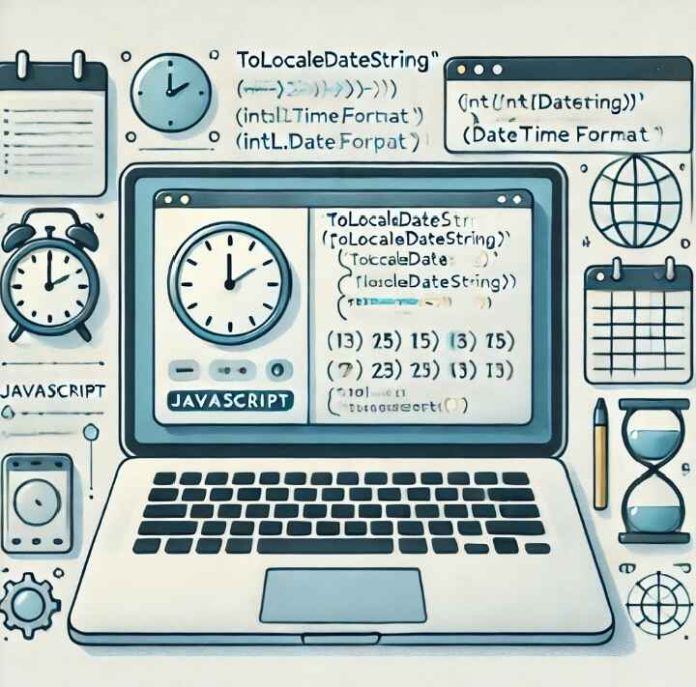Formatting A Date In JavaScript
Introduction
Formatting dates is a common task in web development, and JavaScript provides several ways to handle this. Whether you’re building a simple webpage or a complex application, understanding how to format dates will enhance the user experience. In this blog post, we’ll cover different ways to format dates in JavaScript, from built-in methods to modern libraries.
1. Using the Date Object
JavaScript’s built-in Date object allows you to work with dates and times. While it’s powerful, formatting dates with the Date object requires some manual work.
Example: Custom Formatting
const date = new Date();
const year = date.getFullYear();
const month = String(date.getMonth() + 1).padStart(2, ‘0’); // Months are 0-indexed
const day = String(date.getDate()).padStart(2, ‘0’);
const formattedDate = `${year}-${month}-${day}`;
console.log(formattedDate); // Outputs: YYYY-MM-DD
Explanation:
getFullYear() gets the four-digit year.
getMonth() returns the month (0-11), so we add 1.
getDate() gives the day of the month.
padStart(2, ‘0’) ensures values like “1” are displayed as “01”.
2. Using Intl.DateTimeFormat
The Intl.DateTimeFormat API is a modern way to format dates, supporting localization.
Example: Formatting for a Specific Locale
const date = new Date();
const formatter = new Intl.DateTimeFormat(‘en-US’, {
year: ‘numeric’,
month: ‘long’,
day: ‘numeric’,
Console.log(formatter.format(date)); // Outputs: January 7, 2025
Key Options:
year: Format as numeric or 2-digit.
month: Format as numeric, 2-digit, long (e.g., January), short (e.g., Jan).
day: Format as numeric or 2-digit.
This method is ideal for displaying dates in a way that’s consistent with the user’s locale.
3. Using toLocaleDateString
The toLocaleDateString method is another built-in way to format dates, similar to Intl.DateTimeFormat.
Example:
const date = new Date();
console.log(date.toLocaleDateString(‘en-GB’)); // Outputs: DD/MM/YYYY (UK format)
console.log(date.toLocaleDateString(‘en-US’)); // Outputs: MM/DD/YYYY (US format)
You can pass an options object for more customization:
console.log(date.toLocaleDateString(‘en-US’, { weekday: ‘long’, year: ‘numeric’, month: ‘short’, day: ‘2-digit’ }));
// Outputs: Tuesday, Jan 07, 2025
4. Using Libraries (e.g., date-fns or moment)
For more complex date formatting, libraries like date-fns and moment offer additional functionality.
Example: Using date-fns
Install the library first:
npm install date-fns
Then use it in your project:
import { format } from ‘date-fns’;
const date = new Date();
const formattedDate = format(date, ‘yyyy-MM-dd’);
console.log(formattedDate); // Outputs: 2025-01-07
Example: Using moment
If you prefer moment:
npm install moment
import moment from ‘moment’;
const date = moment().format(‘YYYY-MM-DD’);
console.log(date); // Outputs: 2025-01-07
Why Use Libraries?
Simplify complex formatting tasks.
Support for p
arsing, manipulating, and formatting dates in one tool.
5. Comparing Methods
Conclusion
JavaScript provides multiple ways to format dates, ranging from basic built-in methods to powerful libraries. For simple tasks, the Intl.DateTimeFormat or toLocaleDateString methods work well. For more flexibility, especially in complex applications, libraries like date-fns or moment are great options.
Understanding the available tools and when to use them will save you time and make your code more readable. Happy coding!



